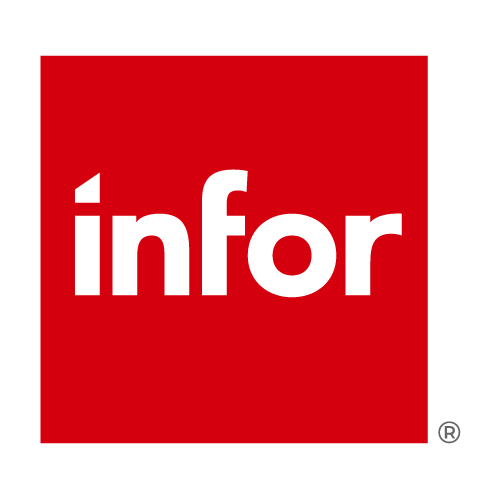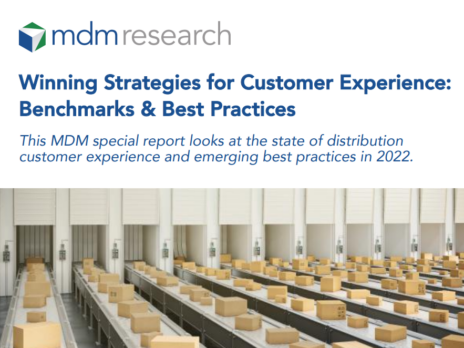
From soaring energy prices to political and economic disruption, industries have been facing volatility around the globe. These back-to-back disruptions have catalysed or accelerated changes in every industry – some more drastically than others – which requires fast responses from distributors to adapt to change and react to supply chain issues, staff shortages and more.

But customers themselves are changing too, with demand for a more customisable service and lower costs, as 96% of consumers intend to adopt cost-saving behaviours in 2023, according to PwC’s Global Consumer survey. More and more original equipment manufacturers (OEMs) are utilising digital channels and adopting cloud in wholesale distribution to drive process productivity and harness new opportunities through digital transformation to meet these customer demands
A global leader in enterprise software, Infor helps distributors to meet these new challenges by embracing innovation with the adoption of ERP and warehouse management system (WMS) solutions. In conversation with Tech Monitor’s Matt Gooding in a webinar on the future of distribution, Jonas Petterson, global solution director at Infor, highlighted that adapting to change is the top motive behind why distributors need to define areas of improvement in their digital transformation strategy so that they can remain adaptable to change at a matched pace.
“The speed of change is incredible,” says Petterson. “After such instability with the pandemic and other factors, we can say that change is constant and the speed at which it is happening is only increasing.”
Distributors – Adapting to changes quickly
Considering this turbulent landscape, distributors should have the capabilities to respond swiftly to any change to mitigate risk with the help of cloud and digital technologies, asking themselves key questions that will shape their transformation journeys.
“The end goal is to make sure you have a digital platform that is always ready for change,” says Petterson. “Organisations should be asking themselves what their abilities are in adapting to change. How quickly can they get into a new sales channel, adapt to change in a supply chain or increase productivity in the area of operations?”
Having this defined end goal is essential for distributors to accurately pinpoint what tooling and staff are needed in their organisation to get there. Then they can implement this to optimise the productivity of processes and workforces to respond to new and existing challenges.
Transforming distributor relationships through the cloud
Among the many changes, cloud can transform relationships between customers for wholesale distributors. Customer behaviours and demands are shifting, as they expect more customised services and tight lead times while requiring more transparency on sustainable operations.
But the challenge here has been getting close to the customer to understand these needs. Through digital tools, distributors can closely manage customer communications and utilise omnichannel interaction, rather than distance managing from off-prem.
“It’s not only over the counter or through phone or emails and so forth. It’s now social media interaction, but also e-commerce and digital ways of interacting,” says Petterson. “This helps to build product portfolios around these closer customer interactions. Sustainability and the reliability of product become important too; making this interaction dynamic is crucial to manage and adapt to these changes.”
Cloud technology allows companies to be agile around these customer-led changes and helps to facilitate omnichannel sales, ensuring that the customer is present across all sales channels. If they are not, distributors can use tools to pivot to that sales channel to respond to or draw in customer demand.
“If that channel is a showroom, then it’s about being able to display your product effectively, or on a commerce platform, or social media,” says Petterson. “But it’s also about considering what the customer is looking for. They want better [and] more choices and the ability for custom configurations. CPQ enablement is a sales tool many of these platforms are using to configure prices and quotes, and start interacting through 3D models and so forth to really understand what the product is. That is becoming increasingly important,” he continues.
Cloud will improve inventory management and supply chains
Digitising warehouse and inventory management using WMS technology will also make it sufficiently easier to manage, through process automation and using the appropriate tracking tools. “To optimise the productivity of the workforce, being more mobile in warehouse operations will minimise the effort needed in quickly adapting to changes and responding to needs as they arise,” says Petterson.
Supply chains also require better sustainability standards to maintain functional relationships, from manufacturing to distributors, which will contribute towards secure resilient supply chains. To create such resilience, both distributors and cloud providers must understand the industry-specific processes and the supply chain to gain this visibility.
“Whatever that type of change is, be it at the beginning or end of the supply chain, monitoring processes and relationships by using tools such as process mining will help to track operations,” says Petterson. “Distributors can monitor data and retrieve signals if something starts to be out of bounds. Machine learning is heavily stepping in to generate insights, while also helping to automate, recommend and augment information,” he continues.
Enterprises are striving to become data-driven, and additional data collection will be the key to making sure distributors can also manage risk and predict scenarios from retrieving insights and analysis, to give visibility on shortages, data gaps, errors or specific requests so they can adapt to these changes.
“Is data already being collected today? Yes, but mostly for more tailored usage for specific reports and so on. We hear a lot about big data. Cloud enables collecting and storing huge amounts of data, which then functions as your goldmine to analyse and apply towards developing new business models or drive insights you might not otherwise see,” says Petterson.
Optimising processes and talent
Relying on cloud and digital technologies helps to bolster and redistribute human resources, to plug current tech talent shortages, while organisations look to upskill existing staff and recruit new talent in emerging technologies.
But it is critical for distributors to have a cloud partner that understands their industry and the capabilities involved in optimising distribution, so distributors can leverage what is being offered to them.
“Staying evergreen and making sure business applications are regularly developed with the range of services needed, using machine learning, big data, IoT, process mining and automation and so forth, become extremely important to be able to meet challenges,” Petterson reminds us. “But it must be with a partner that understands the industry and the business. They must be committed with the right tools and so forth.”
Cloudification is a function almost every industry is learning to embrace, to minimise risk in a continually complex future. If distributors are to adapt in turbulent times and be responsive to change, then a clear goal to define their digital transformation journey will help them to plot the areas of investment for tooling, specialism and digitisation needed to do so.








